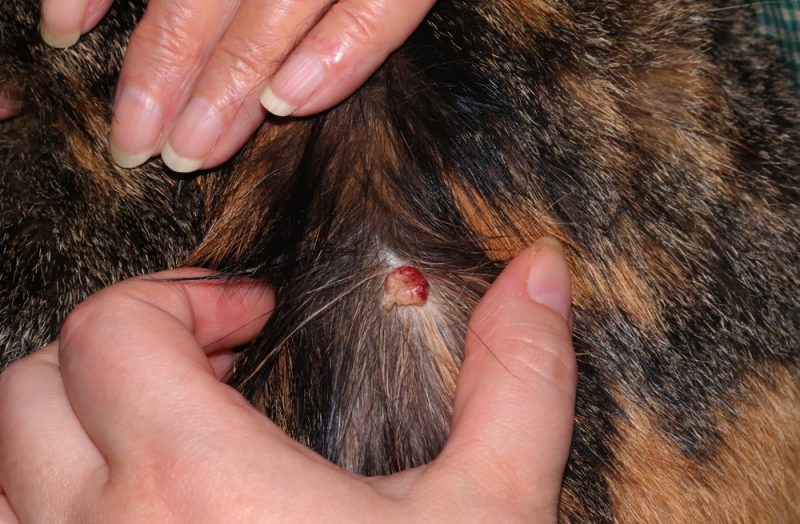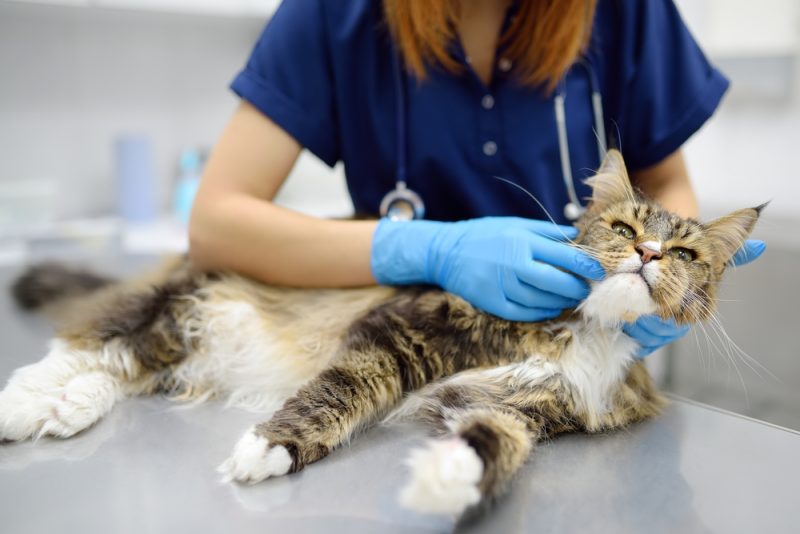Our pets are an exquisite supply of affection, companionship, leisure, and stress reduction, however they will additionally make us fear. Regardless of the various steps we take and the measures we put in place to verify we’re giving our cats the easiest care, there’ll at all times be sicknesses which can be utterly out of our management, and most cancers continues to be certainly one of them.
There are a number of sorts of most cancers that may have an effect on our feline companions, and basal cell tumors are one of the frequent pores and skin tumors in cats. The excellent news is that greater than 90% of those are benign.
Let’s take a more in-depth have a look at basal cell tumors in cats, together with how one can acknowledge them and the way they’re handled.

What Is a Basal Cell Tumor?
A tumor is an irregular progress of cells, with the kind of tumor decided by the kind of cells concerned. Why tumors kind remains to be not absolutely understood, however as soon as they start, the irregular cells proceed to develop and replicate. Some are restricted to a single, contained space, often known as benign tumors. In the meantime, malignant tumors (most cancers) invade surrounding tissues and buildings and should unfold (metastasize) to totally different components of the physique by means of the blood or lymphatic system.
Basal cell tumors kind from the basal cell layer of the dermis. Normally, these tumors are benign and don’t develop past the basal cell layer within the space the place they began. In roughly 10% of circumstances, the tumor will develop and replicate past the basal cell layer and into the encompassing tissues. This is called malignant basal cell carcinoma (BCC).

The place Are the Indicators of a Basal Cell Tumor?
Though basal cell tumors can develop anyplace on the pores and skin, they’re most typical on the top, neck, and shoulders. They’ll vary from 0.4 inches to over 4 inches in diameter and are normally agency, raised, hairless, or might develop from a stalk.
BCC lesions aren’t normally raised however seem as irritated, ulcerated lesions on the top, neck, or legs. Though BCCs will develop and unfold into the encompassing pores and skin, they don’t are likely to metastasize.
What Causes Basal Cell Tumors?
We don’t absolutely perceive how or why basal cell tumors kind. There could also be a number of predisposing components, together with viral infections, age, genetics, solar publicity, and breed. Lengthy and medium-haired cats, corresponding to Persians, Himalayan, and Angoras, have a better incidence of basal cell tumors in contrast with different breeds.

How Are Basal Cell Tumors Recognized?
Relying on the dimensions and site of the expansion, a prognosis could also be made utilizing:
- High quality-needle aspirate: A small variety of cells are taken from the mass utilizing a needle and examined beneath a microscope.
- Incisional biopsy: A piece of the tumor is eliminated utilizing a scalpel or biopsy punch, and despatched for histopathological examination (analyzing skinny sections of tissue beneath a microscope).
- Excisional biopsy: Your complete tumor is eliminated surgically and despatched for histopathological examination.
If the tumor is discovered to be a malignant BCC, your vet might advocate additional investigations, corresponding to blood checks, imaging, and lymph node biopsies, to examine whether or not the tumor has unfold.
How Is a Basal Cell Tumor Handled?
Small, benign basal cell tumors could also be monitored and solely eliminated in the event that they bear fast progress or adjustments in look. Cryosurgery could also be used to take away very small tumors.
Surgical elimination is the remedy of selection for malignant basal cell carcinomas. If the BCC is in a location the place surgical elimination will not be potential or seemingly to achieve success, radiation remedy or chemotherapy can be utilized.
Basal cell carcinomas have a excessive remedy success fee.

Steadily Requested Questions
What Is the Prognosis for a Cat With Basal Cell Tumor or Carcinoma?
For cats with basal cell tumors, the prognosis is great. Even these with malignant BCC have an excellent prognosis as a result of low fee of malignancy of such a tumor. Nonetheless, left untreated, they will trigger ache, struggling, and presumably unfold, so elimination of BCCs is at all times beneficial.

What’s the Distinction Between a Basal Cell Carcinoma and a Squamous Cell Carcinoma?
Because the identify suggests, squamous cell carcinoma (SCC) originates from the squamous layer of the dermis, which is thicker and extra superficial than the basal layer. Not like BCC, SCC is an aggressive, invasive, and generally metastatic tumor. They generally happen on the face and ears, significantly in white or light-pigmented pores and skin. They’re additionally a standard oral tumor in cats. There isn’t any acknowledged benign type of SCC in cats.
What Ought to I Do if My Cat Makes Their Basal Cell Tumor Bleed?
In case your cat has a benign basal cell tumor, they might sometimes knock or scratch the lesion and make it bleed. Whereas that is no quick trigger for concern, if this occurs repeatedly, it may enhance their threat of an infection, and elimination of the mass must be thought-about.

Conclusion
Basal cell tumors are the frequent pores and skin tumors of cats and canine, with lower than 10% being malignant. Within the case of basal cell carcinoma, early detection and remedy have a excessive success fee, so you will need to have any new lump, bump, or progress checked by your vet. The smaller the expansion, the simpler it’s to take away.
Featured Picture Credit score: Catster




